#forest tent caterpillar
Photo

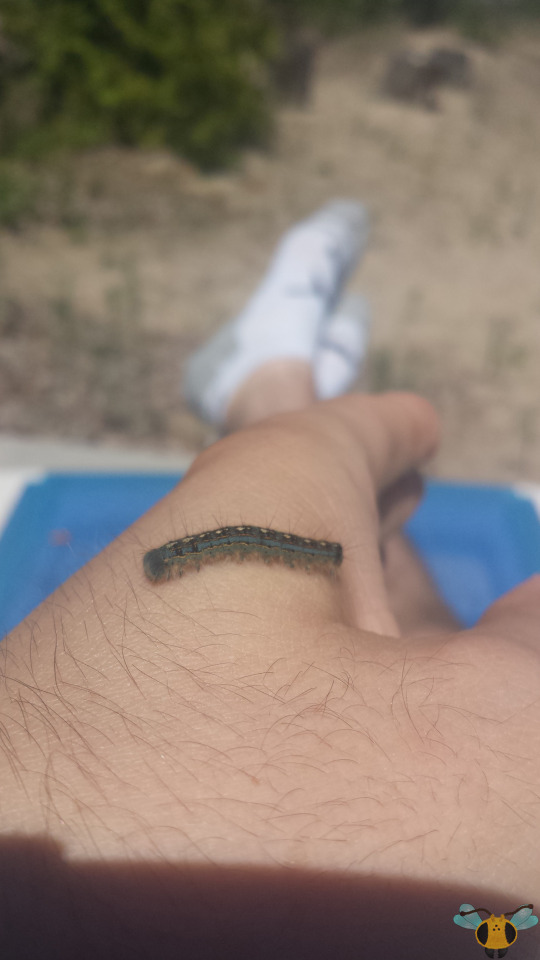
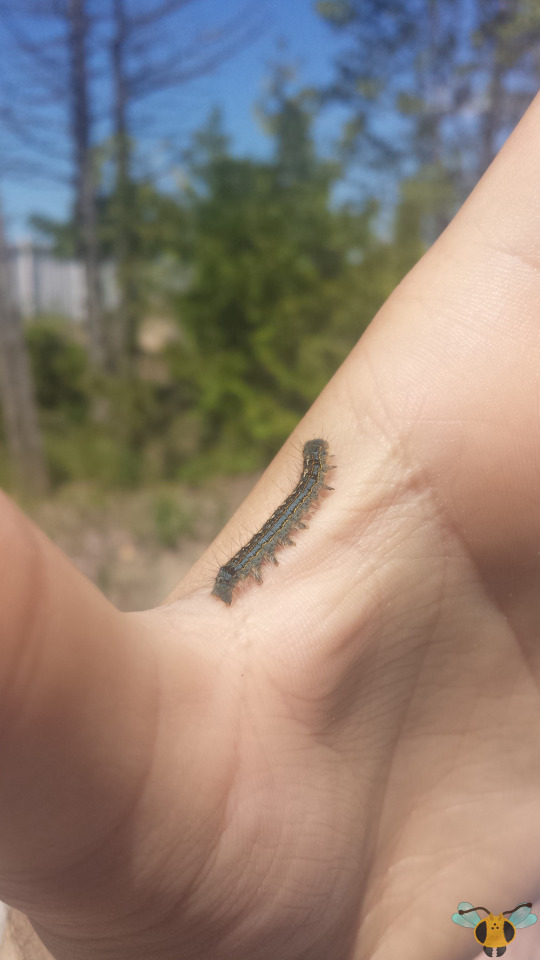
Eastern Tent Caterpillar and Forest Tent Caterpillar - Malacosoma americana & Malacosoma disstria
At first glance, these two insects might be mistaken for each other, leading to much confusion and speculation over how worried one should be over the surrounding foliage! So, which insect is which? Picture 1 gives a glimpse at the Eastern Tent Caterpillar while Pictures 2 and 3 are of the Forest Tent Caterpillar. They easiest way to tell them apart is to look at the line going across their backs from head to abdominal tip. The Eastern Caterpillar’s dorsal line is a firm, solid line while the Forest Caterpillar’s line is separated across body segments. Furthermore, the Forest Caterpillar’s body has the appearance of greater predominance of blue while the Eastern Caterpillar’s blue is more obscured by the hairs (with golden hues) dotted along the body. Finally, the Eastern Caterpillar has a dark colored face and the Forest Caterpillar has a bright face of a bluish hue. Those are the physical differences, but there are also differences in their nesting habits which are discussed below. For now, whichever Caterpillar you find on your travels, handle with care as the hairs have the potential to be irritating on contact with skin. Nothing happened to me when I handled the Forest specimen, but I still advice caution. When it comes to hairy Caterpillars and their effects, there’s a world of difference between Woolly Bears and White-Marked Tussock Caterpillars! The insects of today’s post are somewhere in the middle. Now about those nesting habits...
When it comes to Tent Caterpillars, they are quite social and tend to group up within silken structures (sadly not seen here) near to the foliage they eat. Unlike Spindle Moth Caterpillars which use their silk to bind plants together, Tent Caterpillars use available structures on trees and plants as foundations foor their silk. Eastern Caterpillars spin true tents to live in that are among the largest within Lasiocampidae (a Moth family branch), while Forest Caterpillars create mats and paths with their silk, lining trees with that for adhesion while they feed. The former do share some habits of nest construction with the aforementioned Spindle Caterpillars: build it with sunlight in mind to ensure beneficial heat, and use the nest to avoid predation. However, these Caterpillars here may have gotten lost or fell from their tree. What you see in the pictures before you isn’t the norm, which tends to be outbreaks that congregate on foliage, leading to voracious feeding! Isolation tends to happen when it’s time to pupate (grouping up while in a vulnerable state would just be an invitation for a hungry predator) or if individuals fall from a tree when silk production thins out , especially for the Forest Caterpillar. Silk may thin out temporarily, but on the final instar, every bit of silk that was conserved goes into cocoon production.
The Forest Tent Caterpillar’s pictures were taken on July 2, 2016 in Wasaga and the Eastern Tent Caterpillar’s picture was taken June 10, 2017 at the Royal Botanical Gardens; both insects were captured with a Samsung Galaxy S4. Next week, a third Caterpillar making a guest appearance in the Eastern Tent Caterpillar’s picture (the Fall Cankerworm) will be explored.
#jonny’s insect catalogue#ontario insect#caterpillar#eastern tent caterpillar#forest tent caterpillar#eastern tent caterpillar moth#forest tent caterpillar moth#tent caterpillar#moth#lepidoptera#insect#wasaga#royal botanical gardens#july2016#2016#june2017#2017#nature#entomology#fall cankerworm#invertebrates
5 notes
·
View notes
Text
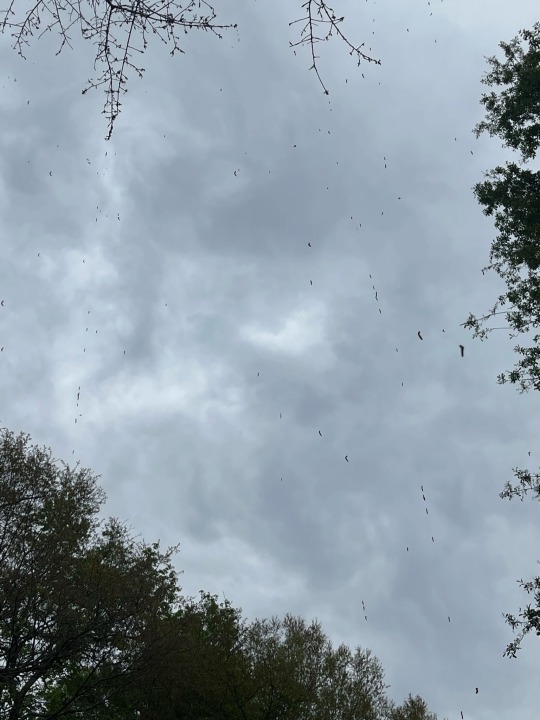
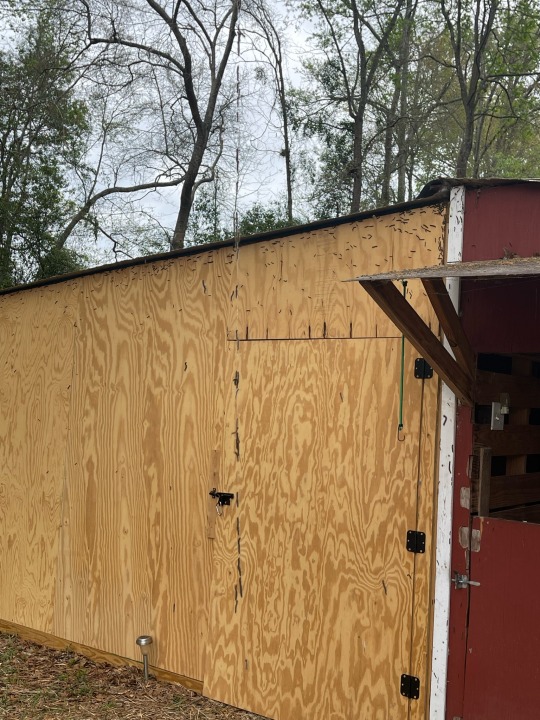
you can tell it's spring
1 note
·
View note
Text
Moth Of The Day #187
Forest Tent Caterpillar Moth
Malacosoma disstria
From the lasiocampidae family. They have a wingspan of about 30 mm. They are native to North America.
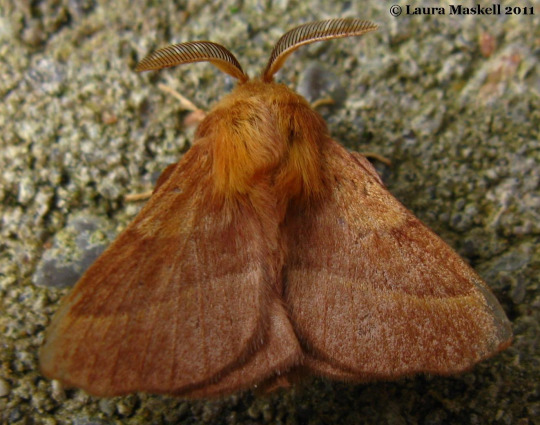

[Images source]
#moth#moths#lepidopterology#lepidoptera#nature#pretty moth#insect#bugs#moth of the day#motd#lepidoptery#entomology#bugblr#bug#invertebrates#cool bugs#insects#lasiocampidae moth#lasiocampidae#forest tent caterpillar moth#malacosoma disstria
337 notes
·
View notes
Note



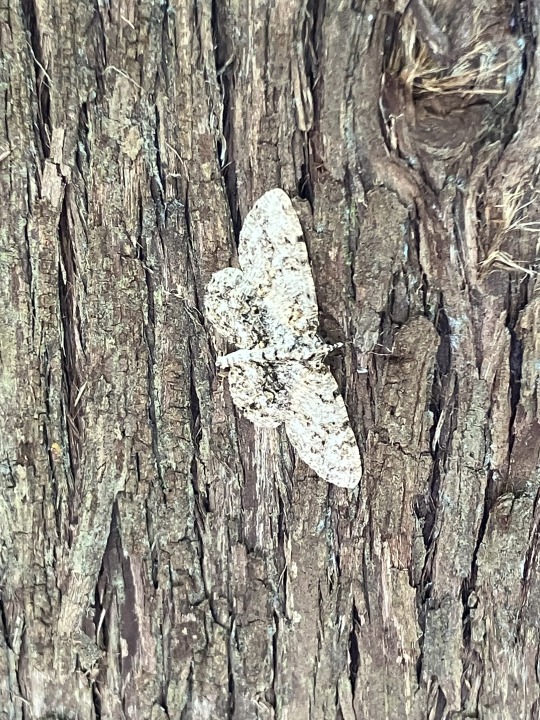
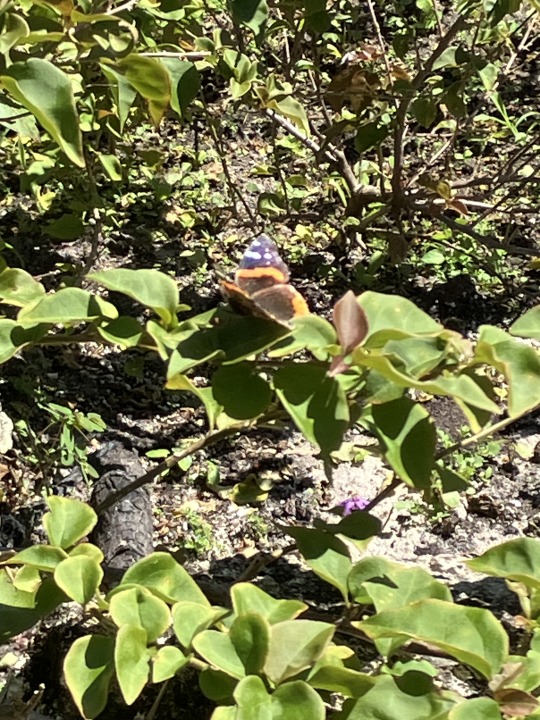
there were SO many caterpillars
All found in Cedar Lake Gardens, FL; if the last one can’t be ID’d no worries, I was following it for ages just to get the photo so it’s not the best shot 😅
Great group of children! The first and second photos show a forest tent caterpillar and a tussock moth caterpillar in the genus Orgyia, probably a fir tussock moth, Orgyia detrita. Third photo is another forest tent caterpillar and the moth is a geometer moth, but I don't recognize the species. Last dude is a red admiral!
#just-your-average-cryptid#insects#bugs#submission#moth#forest tent caterpillar moth#tussock moth#fir tussock moth#geometer moth#butterfly#red admiral#caterpillar#larva
103 notes
·
View notes
Photo
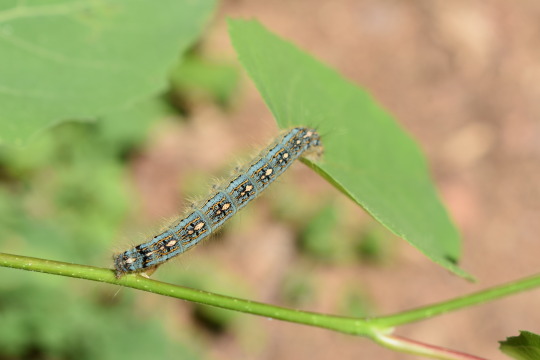
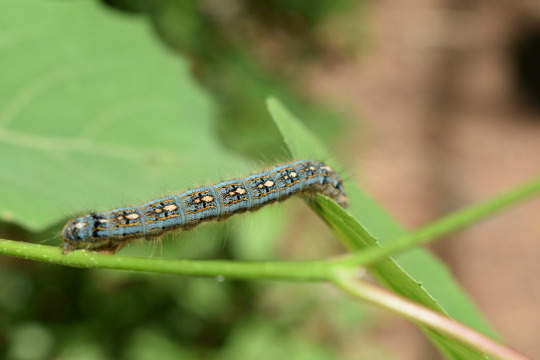
Forest Tent Caterpillar Moth
Malacosoma disstria
Lasiocampidae
Photographs taken on June 20, 2023, at Petroglyphs Provincial Park, Woodview, Ontario, Canada.
#wildflowers of southern ontario#Forest Tent Caterpillar Moth#caterpillar#Malacosoma disstria#insect#Malacosoma#Lasiocampidae#Petroglyphs Provincial Park#Woodview#Ontario#Canada
22 notes
·
View notes
Text

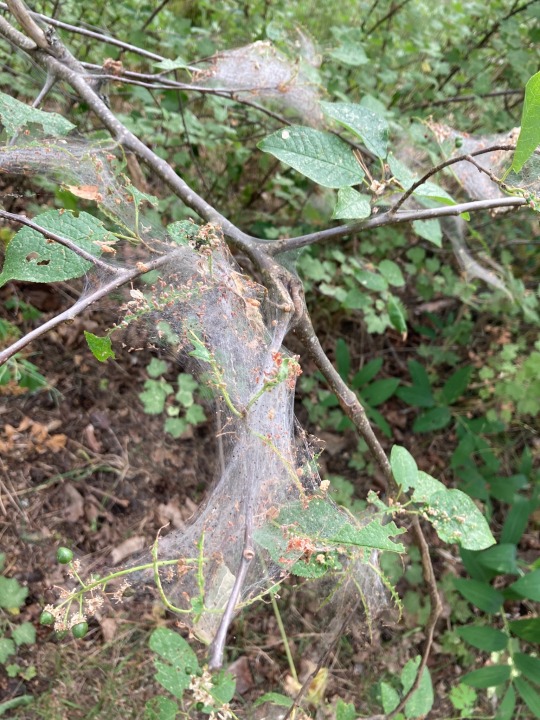


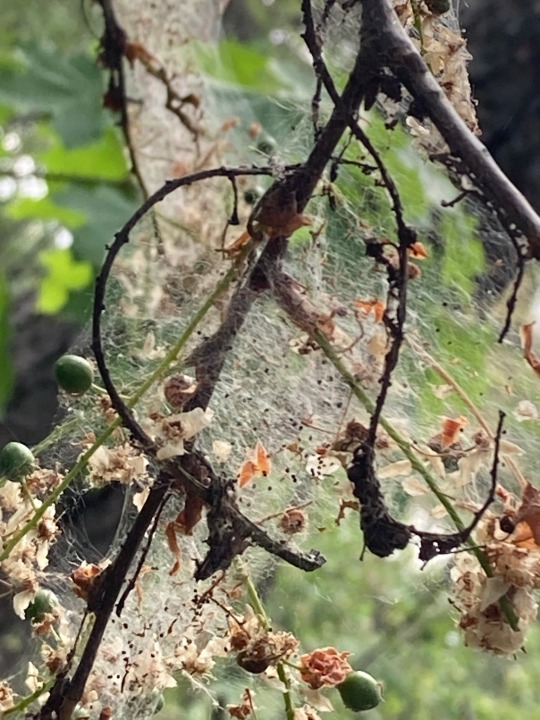
#ermine moths#tent caterpillars#yponomeuta#lepidoptera#insects#forest#trees#ultunaasen#uppsala#sweden
0 notes
Text
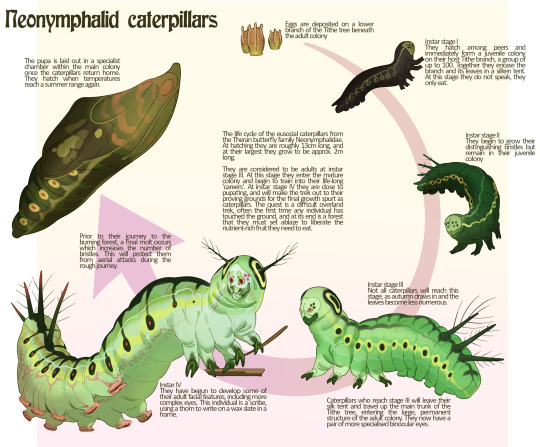
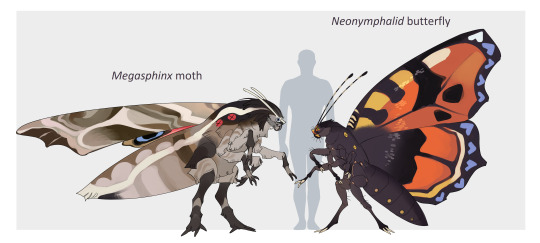
bugs big ones from Thera! the transcript for the top image is under the cut below.
There is a big lie in this which is that the caterpillar pictured in the top image is in fact Nettlerove who is a beetle of the species Cryptostenus oculatus. But he is a brood parasite of these caterpillars, and appears almost identical to one prior to pupation. They emerge as imagos earlier than the true butterflies around them, and then eat their defenceless colonymates. Life's rough for insects. i really wanted to draw baby (and young adult) Nettlerove sooo much so that's why it's him.
The Tithe tree is one of the reasons our bugs are so big. These trees are gigantic and their leaves are incredibly nutrient rich, and their huge hollow trunks are perfect for building colonies in. The social behaviour of these caterpillars is based off of Eriogaster lanestris, a moth which has eusocial silk-tent-spinning caterpillars :) Their true 'child' stage (instars 1 and 2) lasts a single spring and summer, while the subsequent instar stages last several years each. At pupation the individual can be up to 14 years old. The kids are basically left in their tent entirely unsupervised, and in fact it's an intentional strategy to have them on a lower branch than the main colony; any terrestrial predator looking for food will hopefully eat the kids first and leave the main colony alone (Life's ROUGH for insects!!).
Because the caterpillars are considered adults post instar 3, the winged form is not called "the adult" it's just the imago.
[Transcript: Neonymphalid Caterpillars
The life cycle of the eusocial caterpillars from the Theran butterfly family Neonymphalidae. At hatching they are roughly 13cm long, and at their largest they grow to be approx. 2m long.
They are considered to be adults at instar stage III. At this stage they enter the mature colony and begin to train into their life-long 'careers'. At instar stage IV they are close to pupating, and will make the trek out to their proving grounds for the final growth spurt as caterpillars. The quest is a difficult overland trek, often the first time any individual has touched the ground, and at its end is a forest that they must set ablaze to liberate the nutrient-rich fruit they need to eat.
Eggs are deposited on a lower branch of the Tithe tree beneath the adult colony
Instar stage I: They hatch among peers and immediately form a juvenile colony on their host Tithe branch, a group of up to 100. Together they encase the branch and its leaves in a silken tent. At this stage they do not speak, they only eat.
Instar stage II: They begin to grow their distinguishing bristles but remain in their juvenile colony
Instar stage III: Not all caterpillars will reach this stage, as autumn draws in and the leaves become less numerous. Caterpillars who reach stage III will leave their silk tent and travel up the main trunk of the Tithe tree, entering the large, permanent structure of the adult colony. They now have a pair of more specialised binocular eyes.
Instar IV: They have begun to develop some of their adult facial features, including more complex eyes. This individual is a scribe, using a thorn to write on a wax slate in a frame.
Prior to their journey to the burning forest, a final molt occurs which increases the number of bristles. This will protect them from aerial attacks during the rough journey.
The pupa is laid out in a specialist chamber within the main colony once the caterpillars return home. They hatch when temperatures reach a summer range again.]
#btw if you've never actually looked at caterpillar prolegs. well they look like that close up#setting: thera#lov me bugs. insects are always fighting 1000 wars and battles and losing most of the time#speculative biology#speculative evolution
203 notes
·
View notes
Text
Monster Spotlight: Katroome

CR 1
Chaotic Neutral Small Magical Beast
Module: Gallows of Madness, pg. 62
These massive, colorful caterpillars spend their entire lives as such, seemingly never pupating into anything no matter how much (or what) they eat. They don't seem to particularly mind, though, and in fact revel in their adorably pudgy form with alarmingly human eyes, seeing it as a perfect state of being for their life's mission: Being the imperious guards of the forest.
Katroome, for whatever reason, ALL believe themselves to be powerful authorities in the natural world. They are not kings or monarchs (since they never pupate into butterflies, you see), but they have the same opinion of themselves an influential captain of the guard or perhaps a particularly combative mayor would hold: they are a figure worth listening to and obeying, one which protects and defends its small slice of a greater kingdom ruled by powerful nature spirits and Fey. Such beings are the only creatures a Katroome bows to, all others are expected to bow to the pudgy bug instead. The book doesn't really explain how actual, powerful forest guardians see these pompous and confident creatures, but their noted extreme rarity has some unfortunate implications.
Do not view their confidence as fully suicidal, though; Katroome aren't particularly wise (11 Wis), but they ARE smarter than the average human (14 Int) and thus smart enough to know they're squishy-squishy and delicious to a good 90% of life on the planet. Much like a guard captain in a town that hasn't seen real conflict or danger for several years, Katroome investigate any potential malfeasance in their territory with the utmost of caution, and if there IS danger present, they take pains to remain hidden from it and hinder it from afar... all while rallying other guards or getting into contact with higher authorities as needed. They have no DR, no resistances or immunities, and no special defensive abilities, relying entirely on their 20ft climb speed, Small size, and +14 to Stealth to keep out of sight of anything that might be particularly hostile, their 1/day Invisibility acting as an emergency escape option if they're under threat of physical harm.
Katroome being pursued by a hostile force will typically lead that force into areas where it's strung up its web traps and its sticky sheets, slowing attackers down if not neutralizing them entirely and leaving them helpless to other forest guardians. They can also spit their webs from afar up to eight times a day, and though their webbing isn't particularly strong (with a whopping 2 hitpoints), it can at least stick many creatures in place for a round or two. These webs also allow the Katroome to glue weapons or items to the ground or snatch them away, and cocoon troublesome invaders inside their tents or sleeping bags as they rest, both pranks the caterpillars are noted to do.
When webs are too overt, Katroome can use Command 3/day or Suggestion 1/day to sow chaos among a party of invaders, disarming them or causing them to split up... but they're just as likely to use these spells for casual mischief and greed. It is only fitting, of course, that a noble guardian like the Katroome be gifted that expensive-looking hat your Wizard is wearing, you see. Katroome lairs are often decorated with minor magic items they've managed to pilfer from passers-by, either as 'payment' for 'allowing' the creatures passage, or because the Katroome simply stole it with its webbing or its convincing magic.
A caster which particularly impresses or befriends a Katroome may earn the questionable blessing of the creature's trust and a vow of assistance, the big bugs allowing themselves to leave their forested environs to join the quest of a party as Familiars... of course, in this particular relationship, the caterpillars tend to believe it's the casters which are their Familiars, a delusion their new bond is encouraged not to challenge if they wish to keep the bugs on their side. Who knows, perhaps the bond of a Katroome is worth something when going to speak to powerful Fey...?
You can read more about them here.
40 notes
·
View notes
Text
100+ Inspo Words and Ideas
Animals
Giraffe
Jaguar
Elephant
Bear
Snow Leopard
Panther
Squirrels
Fox
Rhino
Wolf
Leopard
Elk
Peacock
Tiger
Butterfly
Lynx
Badger
Parrot
Macaw
Panda
Red Panda
Skunk
Whale
Jellyfish
Owl
Horse
Moth
Swan
Orcas
Octupus
Seahorse
Koi Fish
Crow
Stingray
Deer
Bee
Angelfish
Bat
Dragonfly
Crocodile
Goldfish
Monkey
Turtle
Sloth
Shark
Frog
Dolphin
Crab
Rabbit
Hedgehog
Lion
Coyote
Zebra
Goat
Snake
Penguin
Seal
Fish
Otter
Bird
Cat
Dog
Raccoon
Puffer Fish
Crane
Lizard
Bug
Axolotl
Caterpillar
Eel
Eagle
Falcon
Firefly
Gorilla
Spider
Plants/Flowers
Violet
Snowdrop
Primrose
Cactus
Pansy
Lilac
Carnation
Daisy
Snake Plant
Lily
Sunflower
Wllow Tree
Rose
Succulent
Poppies
Aspens
Peperomia
Azalea
Mushroom
Coral
Tulip
Leaf
Acorn
Eucalyptus
Lavender
Cherry Blossom
Lotus
Vines
Jade Plant
Monstera
Ivy
Hydrangeas
Leaf
Wild Flowers
Sage
Bamboo
Orchids
Rubber Plant
Holly
Oak Tree
Palm Tree
Hibiscus
Bluebells
Hawthorn
Pothos
Magnolia
Rattle Snake Plant
Buttercup
Iris
Aster
Bellflower
Dahlia
Coral
Objects
Lights
Treasure
Ship
Map
Car
Train
Book
Ticket
Bow and Arrow
Trash Can
Axe
Key
Knife
Necklace
Lantern
Candle
Mug
Camera
Glasses
Piano
Mirror
Chess Piece
Trident
Crown
Seashells
Crystals
Lamp
Swing
Fossil
Hot Air Ballon
Sword
Tent
Campfire
Snowflake
Potion
Skull
Planet
Sand Dollar
Tea Pot
Tea Cup
Dreamcatcher
Perfume
Compass
Wand
Globe
Umbrella
Lock
Button
Ring
Neon Sign
Headphones
Flag
Bike
Sparkler
Snow Globe
Hour Glass
Anchor
Stained Glass
Radio
Watering Can
Stuffed Animal
Concepts/Ideas
Fall
Winter
Dreams
Summer
Spring
Enchanted
Tranquil
Mysterious
Ancient
Hope
Overgrown
Sparkly
Adventure
Calm
Wicked
Fancy
Royal
Happy
Marble
Chaotic
Colorful
Angry
Sad
Wet
Deep
Lush
Wonder
Flowing
Dizzy
Bubble
Vintage
Love
Haunted
Electricity
Patterns
Memory
Shadow
Food
Grapefruit
Cotton Candy
Waffle
Lemonade
Tomato
Ice Cream
Blueberry
Strawberry
Cherry
Egg
Hot Cocoa
Pie
Apple
Cake
Donut
Star Fruit
Kiwi
Raspberry
Carrot
Avocado
Coffee
Dragon Fruit
Banana
Orange
Peach
Watermelon
Margarita
Shake
Tea
Lime
Lemon
Honey
Peas
Pineapple
Mango
Gummy Bear
Juice
Iced Tea
Cupcake
Yogurt
Popsicles
Pancakes
Lollipop
Hamburger
Bread
Pear
Grape
Landscape/Nature
Waterfall
Lake
Galaxy
Mountains
Storm
Cliff
Rocks
Clouds
Desert
Jungle
Trees
Forest
Rainbow
Ocean
Meadow
Rain
Beach
Volcano
River
Canyon
Snow
Hiking Trail
Underwater
Cave
Waves
Sunset
Cove
Valley
Swamp
Arctic
Lightning
Flower Field
Dune
Marsh
Hills
Structures
Bridge
Castle
Stairs
House
City
Temple
Window
Door
Famous Structure
Lighthouse
Gazebo
Cottage
Fountain
Allyway
Faris Wheel
Cafe
Book Store
Arch Way
Sidewalk
Lamp Post
Market
Store
Balcony
4 notes
·
View notes
Text
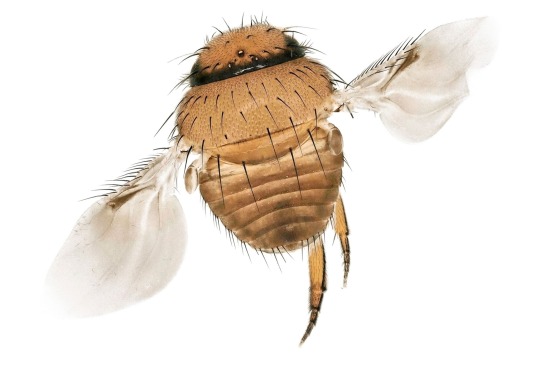
Trapped at eight meters (26 feet) above the ground, this yet-to-be-named phorid fly species is a “parasitoid death-dealing machine” that jabs its eggs into other insects, says entomologist Brian Brown. Brown, the curator of entomology at the Natural History Museum of Los Angeles County, photographed the insects in this article using a camera-and-microscope setup that was originally developed to examine flaws in computer chips. Photograph By Brian Brown, Natural History Museum of Los Aangele County
For Insects, The Amazon’s Canopy Contains A Dazzling Multiverse
A new study finds that high in rainforest trees, insects live in ecosystems that vary wildly from the forest floor on up.
— By Natasha Daly | Published March 2, 2022 | Saturday October 7, 2023
“I thought, my God, this is like someone’s discovered another continent!” says Brian Brown, an Entomology Curator at the Natural History Museum of Los Angeles County. He was talking about insects.
When studying insects in the Amazon, most entomologists cast their eyes down, to the intricate pathways of moss and underbrush that make up the rainforest floor. But José Albertino Rafael wanted to look up. Really far up—to more than 105 feet in the canopy.
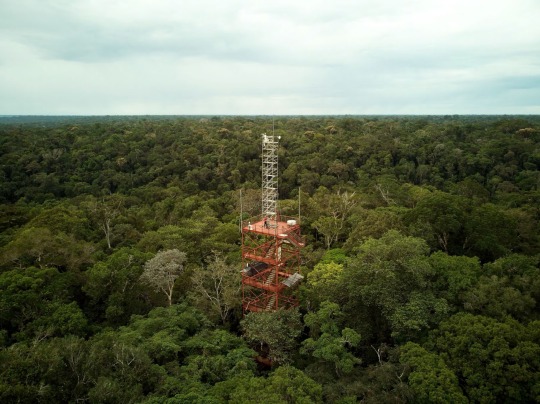
Two hours northwest of Manaus, Brazil, a 131-foot steel tower rises from a pristine area of the rainforest. Built in 1979, the tower had long been used to track the exchange of carbon dioxide between the trees and the atmosphere, but more recently it has been used for pioneering entomology research. Photograph By Craig Cutler
During two weeks in 2017, Rafael, an Entomologist at Brazil’s National Institute of Amazonian Research, and colleagues trapped insects at various heights, starting at ground level, from a 131-foot tower erected in the middle of the Amazon, just outside Manaus.
The findings were staggering, says Brown, who was part of a team that examined and recorded all 37,000 insects that were collected. Nearly half of them were flies. “There were weird and different things. I didn’t even know what genus these were, let alone species.”
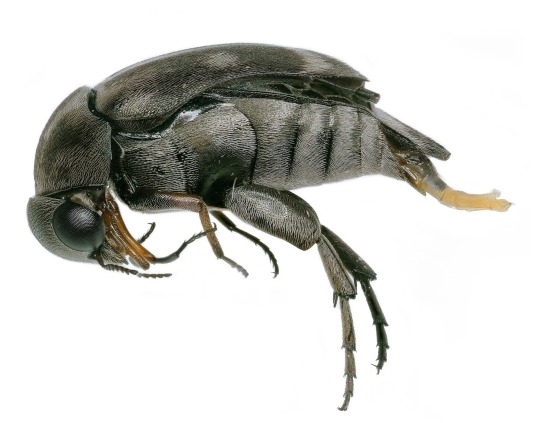
Ground Level: Tumbling flower beetles have a triangular body that helps them escape predators. Photograph By Brian Brown, Natural History Museum of Los Aangele County
The results of their analysis, published in Nature on February 2, point to a distinct and previously unexamined network of ecosystems in rainforest trees. More than 60 percent of the 857 species of flies collected, for example, were found above ground level. Many, if not most, likely are new species, Brown says.
Previous studies have compared insects on the ground with those in the canopy, but this is one of the first efforts to understand insect diversity at smaller vertical intervals.
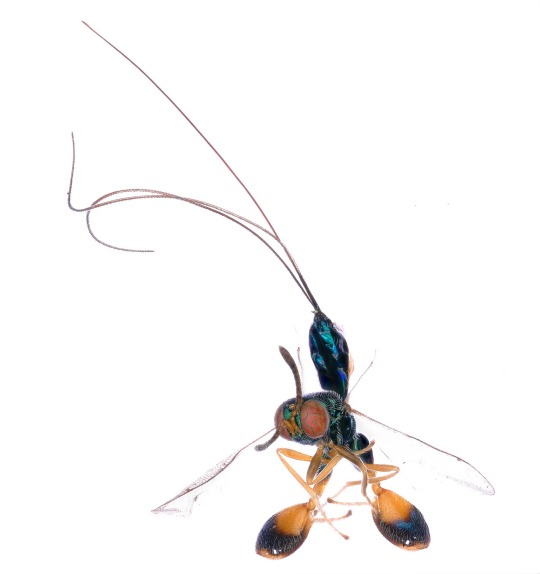
8 Meters (26 Feet): The mantis wasp uses its ovipositor—a needlelike organ for laying eggs—to pierce the egg cases of mantises. When the wasp’s larvae hatch, they feed on the mantis’s eggs. Photograph By Brian Brown, Natural History Museum of Los Aangele County
The findings underscore how much of the insect world still remains undiscovered, says Floyd Shockley, the collections manager of the entomology department at the Smithsonian Institution’s National Museum of Natural History, who was not involved in the study.
“Millions of things that live in the tropical canopy never come to ground,” he says, adding that these kinds of vertical studies “are incredibly important because [without them], we’re missing out on a tremendous amount of biodiversity.”
Sorting Insects
To collect the insects, Rafael set five large, tent-like netted traps off the tower at 26-foot intervals, starting at ground level and reaching up to 105 feet.
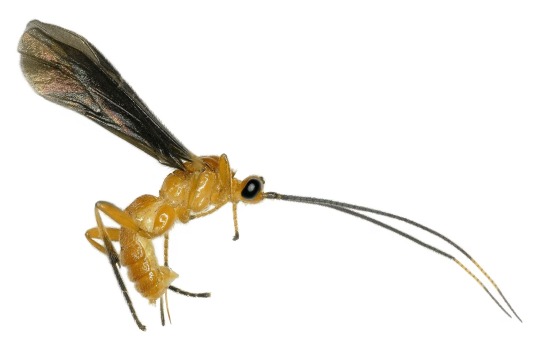
16 Meters (52 Feet): Both the forest canopy and the undergrowth are patrolled by parasitoid wasps seeking their prey—mostly caterpillars. Photograph By Brian Brown, Natural History Museum of Los Aangele County
Brown and Dalton de Souza Amorim, an entomologist at the University of Sao Paolo, and the rest of their team first sorted the insects by order (flies, beetles, bugs, and more). They focused on Diptera—flies—sorting more than 16,000 specimens into 56 families, then into 857 species. It’s unclear how many of those species are new to science. “It would take years and a ton of research to find out,” Brown says, but he guesses that many or most are undescribed.
Some families of flies were most abundant and diverse on the ground. Others were concentrated in the canopy. Still others peaked at the middle levels. Notably, between 90 and 100 percent of specimens of some families of flies were found in the four highest traps.

24 Meters (79 Feet): The watchful jewel beetle's massive eyes allow it to flee from predators—and researchers—quickly, making the beetles difficult to collect for study. Photograph By Brian Brown, Natural History Museum of Los Aangele County
What’s the Bigger Picture?
So much remains unknown about insects. “We’re still finding fish and amphibians, but we’re getting pretty close on birds and mammals to having a complete picture on their diversity,” Shockley says. But scientific models estimate the number of undiscovered insect species at between five and 30 million. “Every time we get one of these studies, it helps us improve the model so we can see how much we haven’t discovered.”
There are many reasons why knowledge of so many insect species remains elusive. “They’re small, they’re fast, they’re highly diverse, and they can occupy almost any niche,” he says.
So “we have to understand how they interact with each other, us, and crops,” Shockley says. “And we can’t talk about what they’re doing until we put a name on what they are.”

32 Meters (105 Feet): Iridescent orchid bees, tropical cousins of bumblebees and honeybees, are among the multitude of insects that entomologists have collected at the observation tower. Photograph By Brian Brown, Natural History Museum of Los Aangele County
Most insect sampling has been done based on latitude and longitude and sometimes altitude—up a mountain, for example, where habitats can change dramatically. But by collecting insects vertically in forest habitats, which is hard to do, Shockley says, “we’re adding an additional dimension to our understanding of diversity in three-dimensional space.”
Flies get a bad rap—it can be hard for people to understand why we should care about them. “But organisms [like insects] are arguably way more important than mammals or birds for the structure of the forest,” Brown says. “They’re important for pollination, energy, recycling, and more. What would happen if there were no insects feeding on decaying bodies? The ecosystem services they provide are so vital—but almost invisible.”
#The Insects 🐞 🕷️ 🐜#The National Geographic#Natasha Daly#Brian Brown | Entomology Curator | Natural History Museum | Los Angeles County.#Manaus | Brazil 🇧🇷#Rafael | Entomologist | Brazil’s 🇧🇷 National Institute of Amazonian Research
0 notes
Text
OC “Wiki Pages”: Zora

—-
Nicknames (aka): Zor-Zor, Zor
Affiliation: Verdant Express
Family: Unnamed father
Friends: Bia, Allegra, Kira
Color: Burnt orange, dark brown, reddish-brown, light blue, light lime, yellow, orange, gray
Special Features: Dragon braid, bandanna, goggles, antenna, tails on wings, high-speed flight, agility and strength
Character Influences: Vidia (Tinker Bell), Raph (TMNT: Mutant Mayhem)
Likes: Traveling, making deliveries, visiting his friends, battling, fire
Dislikes: Wet or humid places, mud, getting wet,waiting, things that take too long
Gender: Male
Pronouns: He/Him
Birthday: December 12
Quote: "At the root!"
—-
Debut: TBA
—-
Zora Dragotel is a character in Unikitty: Big Bright World. He is a swift fairy who flies across Botania to deliver resources. He is also a friend to Kira, Allegra and Bia.
—-
Physical Appearance: Zora is a dragontail butterfly. He used to be a yellow-bronze caterpillar. His face, hands and legs are burnt orange. His wings are dark brown with very light blue stripes running down the middle, two long tails that flow from the bottom of each one, and translucent green parts at the top. His torso is reddish-brown, and so is his hair, which is styled into a very long dragon braid. His eyes are black, similarly to Kira’s. He wears a yellow bandana around his neck, which he uses to cover his mouth, and a pair of orange goggles with a gray stripe at the top.
Personality: Zora is a resilient and rather tough fairy who runs a little hot. He doesn’t like to be in one place for very long, so he’s always on the move. He’s alert and prepared for anything most of the time. He moves at quick paces and high speeds, so he can be hard to spot. He also doesn’t like to get wet, which is probably why he travels around Botania’s grassland and desert biomes. He delivers supplies from those areas to the Verdant Forest, but he never goes to the rainforest. He’s the most relentless and the one expected to throw punches the first chance he gets. He mostly prefers to do his own thing, but he’s very loyal to his friends. He can be mildly sardonic.
Zora is easily impatient, bored, and annoyed. He’ll dread having to do something if it takes a long time. Though he can think logically for the most part, his alertness leads to him wanting to pick a fight with anything that looks suspicious. He’d never do something requiring him to stay in a particular area for a long time. He’s not used to going to the wet places in the land, so a rainforest delivery would be more than a little difficult for him.
Abilities: Zora is very agile and strong. He’s also excellent at flying, demonstrated by how fast he can go. He has proficiency with a rope, as he carries around a lasso to get around with. He is skilled in shelter building, basic repair, gathering materials, and keeping safe from sandstorms and rain.
—-
Trivia
Zora is comforted by the sight and sound of fire.
This is shown by how he illuminates his tent with a candle.
Given the color of the stripes on his wings, Zora is a green dragontail butterfly.
Zora's name is Zoro in the Spanish, Portuguese and Italian versions, due to naming conventions in countries that speak those languages.
In the Japanese version, his name is Sora, which is a unisex Japanese given name in real life.
"At the root!" is a phrase said by deliverers in Botania when they arrive at their recipient's location.
—-
In Other Languages
Arabic: الزوراء / “Alzawra'”
Spanish: Zoro
German: Zora
Swedish: Zora
Italian: Zoro
Swahili: Zora
Portuguese: Zoro
Korean: 조라 / “Zora”
Japanese: そら / “Sora”
Chinese: 佐拉/ “Zuǒlā”
Polish: Zora
Greek: Ζόρα / “Zóra”
French: Zora
Russian: Зора / “Zora”
Hindi: ज़ोरा / “Zora”
Thai: โซรา / “Sorā”
Turkish: Zora
0 notes
Text
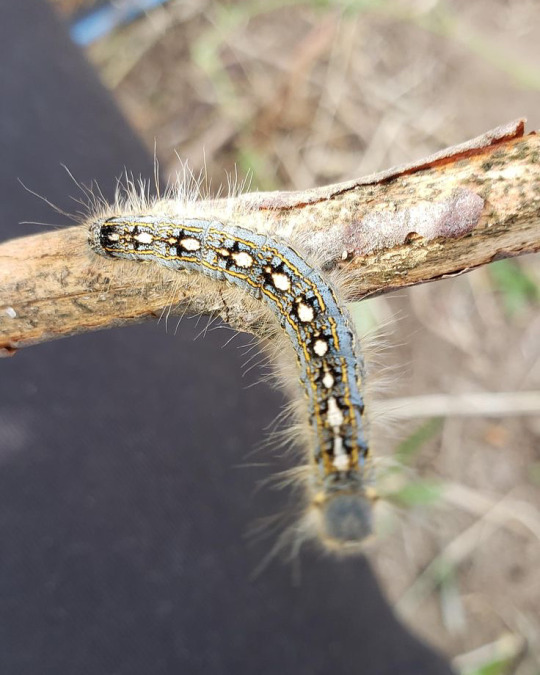
This is a forest tent caterpillar moth. They also have a very interesting pattern that resembles tiny penguins.
#nature is everything#nature is weird#interesting#interesting facts#nature#discover#animals#animalsareawesome#catapillar#catapillars#like woah#woah :0#but woah#woah woah woah#woahhhh#woah dude#woah#thats crazy#thats interesting#thats incredible#thats insane#thats the post#what then#what the hell#what the heck#penguins#penguin#camoflauge#camo#illusion
1 note
·
View note
Note
Have you done forest tent caterpillar moth yet?
MOTD#187.
25 notes
·
View notes
Text

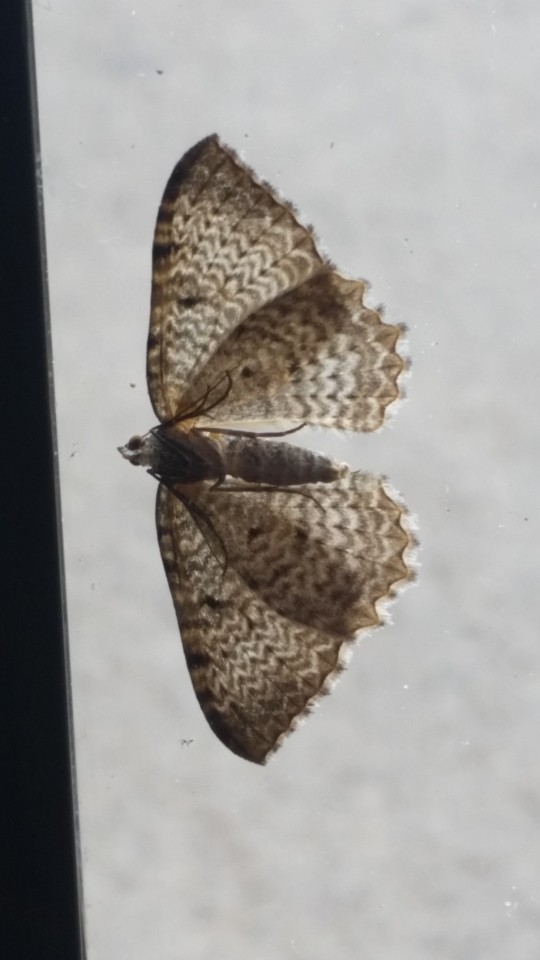


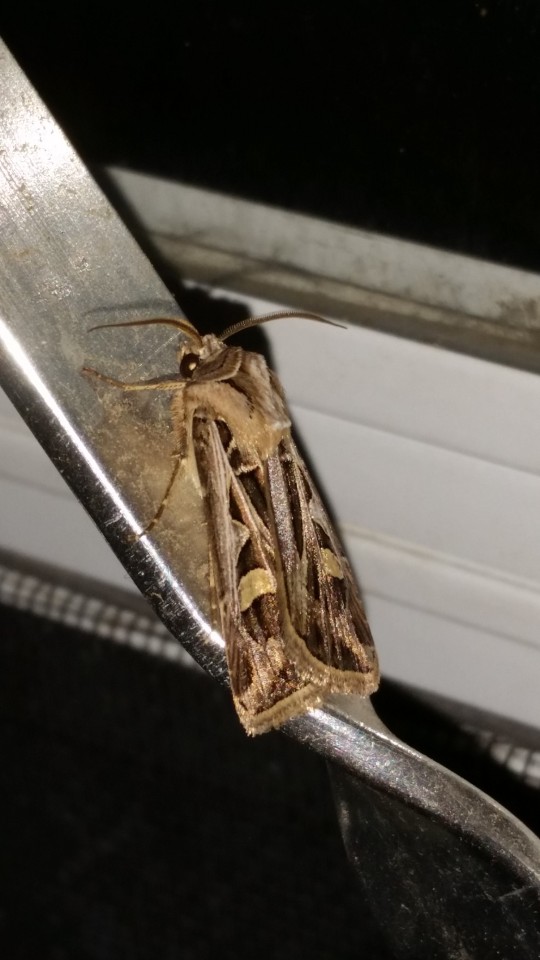




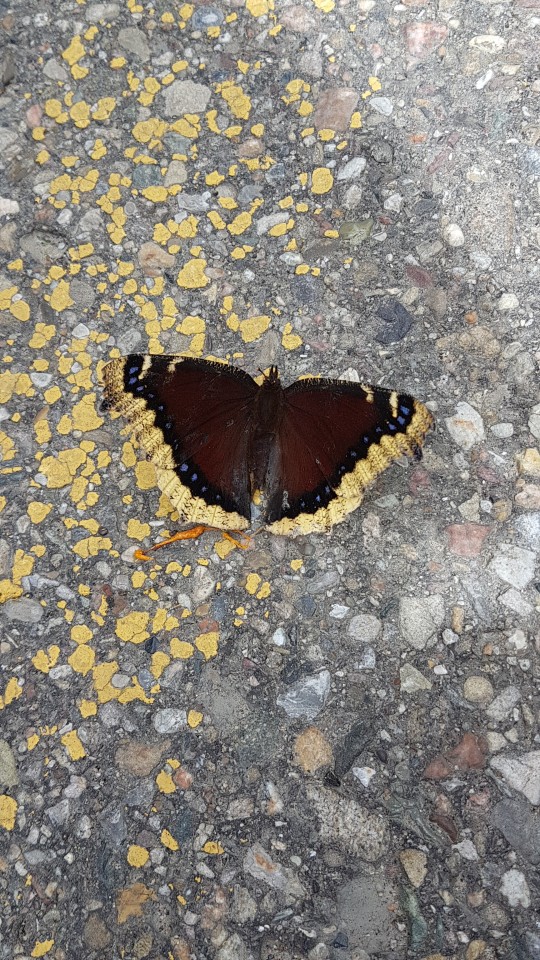
@gallifreyanconsultingphilosopher submitted: More old phone bugs. The mourning cloak is my personal favourite although the water beetle is one of my rarer finds.
Always fun to find a diving beetle out of water! I think my favorite is the very fuzzy forest tent caterpillar moth in the third photo :)
#animals#insects#bugs#submission#moth#noctuidae#forest tent caterpillar moth#beetle#diving beetle#predaceous diving beetle#butterfly#mourning cloak#long post
71 notes
·
View notes
Text

A forest tent caterpillar moth in New York's Catskill Mountains. (Carla Rhodes)
0 notes
Photo
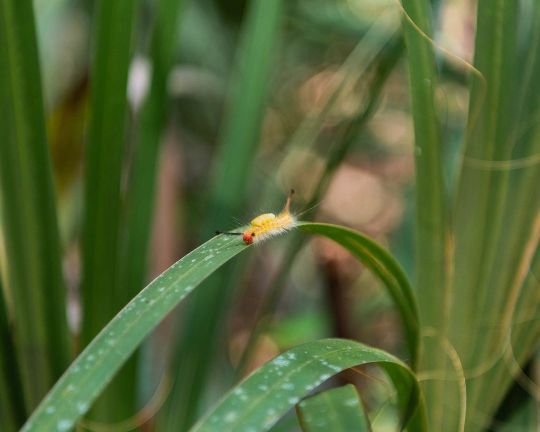
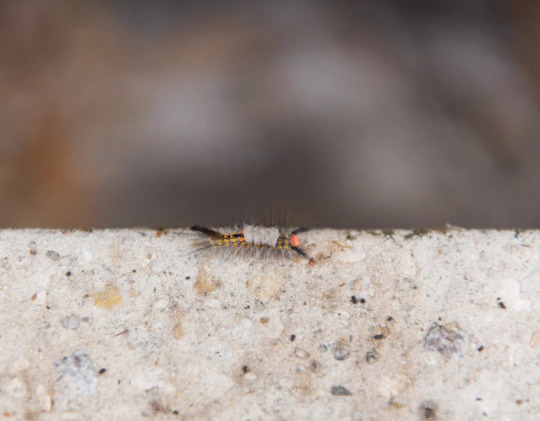
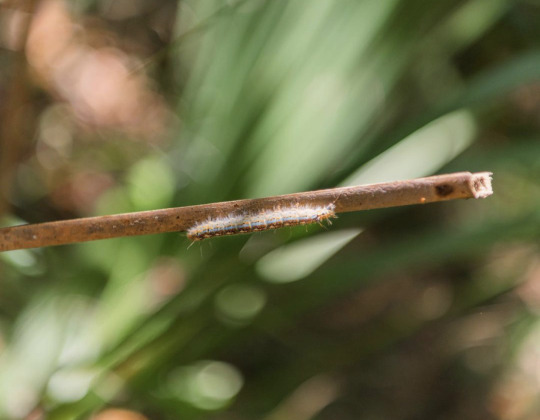




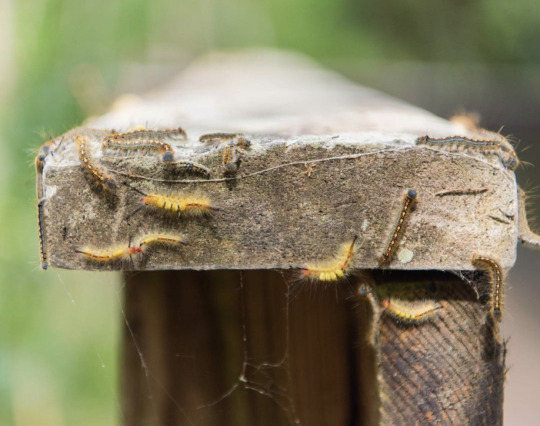

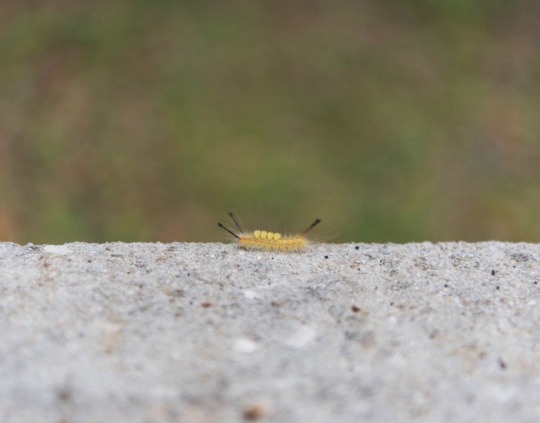
As a follow-up to my post about moths last week, here are some of the baby moths I ran into this spring at one of my favorite state parks! 🥰 🐛 1 Fir tussock moth caterpillar (Orgyia detrita - light form) 2 Fir tussock moth caterpillar (Orgyia detrita - gray form) 3 Forest tent moth caterpillar (Malacosoma disstria) 4 Fir Tussock Moth caterpillars 5 No clue. Any of my ento friends know? 6 Forest tent moth caterpillars 7 Forest tent caterpillar moths and Fir tussock moth caterpillars 8 Forest tent caterpillar moths and Fir tussock moth caterpillars 9 Forest tent caterpillar moths and Fir tussock moth caterpillars 10 Fir Tussock Moth ☀️ 🐛 🔎 #florida #bug #insect #moth #lepidoptera #macro #nature #naturelovers #nature_brilliance #fiftyshades_of_nature #moths #tussockmoth #caterpillars #forest #firtussockmoth #Orgyiadetrita #foresttentmoth #Malacosomadisstria #hilllsboroughriver #floridastateparks @fl.stateparks @visitflorida @visittampabay @hillsboroughfl @timperlinetampa @floridastateparksfoundation (at Hillsborough River State Park) https://www.instagram.com/p/Cg69RXeulJM/?igshid=NGJjMDIxMWI=
#florida#bug#insect#moth#lepidoptera#macro#nature#naturelovers#nature_brilliance#fiftyshades_of_nature#moths#tussockmoth#caterpillars#forest#firtussockmoth#orgyiadetrita#foresttentmoth#malacosomadisstria#hilllsboroughriver#floridastateparks
0 notes